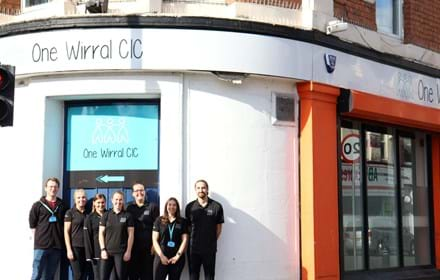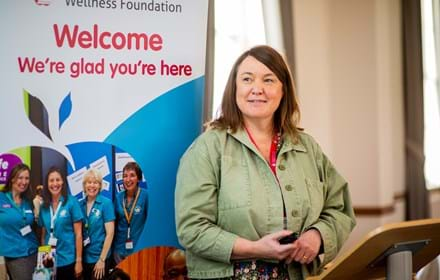
Two different treatments for two different variations of type 1 diabetes?
Study questions whether two forms of the condition may exist – and considers how to treat them.
A recently published report has thrown into question existing knowledge of type 1 diabetes – by suggesting the condition may exist in two forms.
Many people will be aware of the difference between type 1 and type 2 diabetes.
Type 1 diabetes is an autoimmune condition whereby the pancreas does not produce enough insulin and so people living with the condition are required to take insulin injections.
Type 2 diabetes is often caused as a result lifestyle factors, including being overweight, diet and exercise.
However, a study by researchers at the University of Exeter recently published in Diabetologia suggests type 1 diabetes could be two separate conditions, meaning there are more forms than previously understood.
The age at which a person is diagnosed with type 1 diabetes seems to be linked to the severity of their symptoms.
The study found that children diagnosed with type 1 diabetes under the age of seven have a different form (or “endotype”) of the condition compared with those diagnosed aged 13 or above.
The research team suggested new names for the two distinct endotypes: Type 1 Diabetes Endotype 1 (T1DE1) for that diagnosed in the youngest children, and Type 1 Diabetes Endotype 2 (T1DE2) for those who are older at diagnosis.
For the study researchers looked at two bioresources including the Exeter pancreatic biobank - the most extensive resource of its type anywhere in the world - comprising more than 130 samples, many of which come from children and young people who died soon after being diagnosed with type 1 diabetes.
They also studied whether the differences seen in the pancreas are mirrored in the blood of people diagnosed with type 1 diabetes at increasing ages.

Picture: People with type 1 diabetes have to inject themselves daily to supply their body with insulin.
Dr Sarah Richardson
Dr Sarah Richardson, Associate Professor at the University of Exeter Medical School, who also a previously DRWF-funded researcher and author of the study, said: “Our research could have a significant impact on current emerging therapies for type 1 diabetes. We’re seeing a lot of promise in immunotherapies which can slow disease progression, but so far that hasn’t translated into effective new treatments. It could be that we need to focus on the use of different therapies in each age group, for these to be effective.”
Dr Richardson added: “A child diagnosed [with type 1 diabetes] before the age of five is likely to have a more severe form of the condition than someone aged over 30.”
People with diabetes often experience having high blood sugar levels as they cannot produce or their body fails to respond to insulin, a hormone that allows sugar to be taken up by our cells and either converted to energy or stored.
People living with type 1 diabetes develop the condition because their immune system attacks the cells in the pancreas that make insulin.
For the study Dr Richardson and her colleagues looked at 32 pancreas samples from young people with diabetes who died in the 1950s and found two distinct categories.
Some pancreases did not appear to make insulin properly and experienced a stronger immune system attack.
The other pancreas samples contained fewer immune cells and showed signs that they were better at making insulin.
Dr Richardson added that the immune attack appeared to be completely different in these two categories.

In further tests researchers looked at blood samples taken from 171 people who had been diagnosed with type 1 diabetes before they reached the age of 30.
They found the same pattern: people fell into one of the two categories, depending on how well their pancreases made insulin.
Researchers concluded that these categories seem to correspond with age.
The findings suggested that people whose type 1 diabetes involved poor insulin production and a stronger immune attack tended to be younger.
Dr Richardson calls this group “endotype 1” in the study and added: “Pretty much everyone under the age of seven falls into this category.”
People diagnosed when they were 13 or older tended to fall into the “endotype 2” category - whose pancreases had fewer immune cells.
Those aged between 7 and 12 when diagnosed could fall in either category.
Dr Richardson said: “The outcome is the same – they both need insulin – but they may have got there through a different pathway.”
She added that the two types may respond better with different treatments in the future.
For example, people with endotype 2 could benefit from treatment that preserves the pancreas cells that make insulin.
However, such a treatment does not exist at present.
The study concluded: “Among those with type 1 diabetes diagnosed under the age of 30 years, there are histologically distinct endotypes that correlate with age at diagnosis. Recognition of such differences should inform the design of future immunotherapeutic interventions designed to arrest disease progression.”
Type 1 diabetes is currently treated with insulin, although researchers have been trialling new immunotherapies that kill the immune cells that attack the pancreas.
However, while clinical trials in adults have not been conclusive, Dr Richardson said the treatment might work better in younger children because immune cells seem to play more of a role in the condition.
In a 2018 study, DRWF-funded researchers based in Sweden and Finland proposed a new classification system for different types of diabetes with five different sub-categories, which could help healthcare professionals predict risk of serious complications and improve treatment suggestions.
These findings were based on age, body mass index, blood sugar, and insulin production and sensitivity.
Dr Richardson and her team said one of the endotypes seems to align with one of these five categories, but the other does not - which could make it possible that there could be six types of diabetes.
Professor Noel Morgan, of the University of Exeter Medical School, said: “We’re extremely excited to find evidence that type 1 diabetes is two separate conditions: T1DE 1 and T1DE 2. The significance of this could be enormous in helping us to understand what causes the illness, and in unlocking avenues to prevent future generations of children from getting type 1 diabetes. It might also lead to new treatments, if we can find ways to reactivate dormant insulin-producing cells in the older age group. This would be a significant step towards the holy grail to find a cure for some people.”
Support DRWF by making a donation here
Find out more about DRWF-funded research here
Find out more about DRWF fundraising here
For latest update follow DRWF on Facebook, Instagram and Twitter
To receive the charity’s latest bulletins as they become available, please sign up here
Read DRWF diabetes information leaflets here
Join the Diabetes Wellness Network here
I would like to make a regular donation of
I would like to make a single donation of
There are lots of ways to raise money to support
people living with all forms of diabetes.
Bake, Swim, Cycle, Fly ... Do It For DRWF!
Fundraise with us
Recent News


